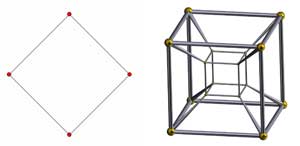
Source: photobucket.com
Additionally, this lesson explores and defines specific media and some of the processes of both selecting and using these media. Media (the plural of medium) includes both digital and non-digital elements that artists employ to translate their unique messages onto sketchpads, canvases and computer screens. Further, this lesson offers a discussion of the links between the Principles of Design and the types of media selected. For instance, an artist would not likely start a sculpture in clay and then continue it in Jello.

Source: shutterstock.com
Another key component that we will explore and practice is balance. Perhaps you have been told, at times, that your life is “out of balance.” One area took predominance over another, and there was a sense of disharmony. Balance is the harmonious distribution of elements or components that generally connotes an appropriate integration, as well. Within the general principle of balance in Art, there are different types of balance—or the lack of it. Artists employ techniques like asymmetrical balance, symmetrical balance, radial balance, color or value balance, and the balance of textures. As both an artist and a critical analyzer of art, you will have opportunities to both explore and apply this principle of balance.
Notice the sense of balance in the “white dove in flight” Nature offers a plethora of examples of various types of balance, and we have but to observe the infinite variety of balanced works that can inspire our own artistic creations.
As we have explored various Principles of Design, of note is the area of emphasis. Notice in the dove in flight that the obvious focal point is the dove itself with an emphasis on the balanced, outstretched wings. When we emphasize something, we “highlight” it or make it a focal point. This idea is the same in the visual arts. Emphasis can include an element(s) of a work that is dominant, and dominance might cover colors or an overall visual emphasis. Dominance and emphasis can appear differently in a two-dimensional work of art than they might in a three-dimensional work of art. Thus, this module will offer an introduction to the importance of geometric shapes as they relate to art and as they may appear both two-dimensionally and three-dimensionally.

Left: Two dimensional square Right: Three-dimensional squares
Source: Wikipedia.org
